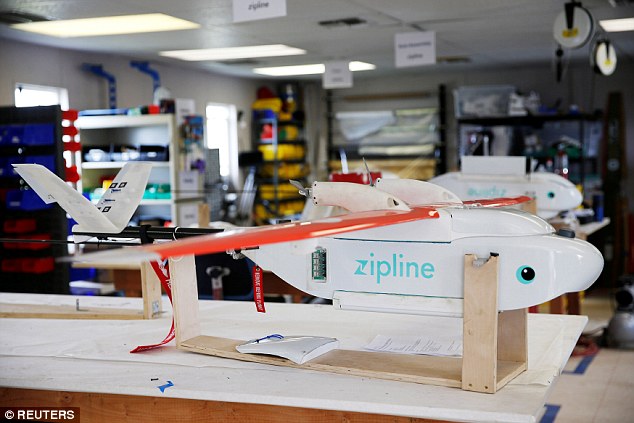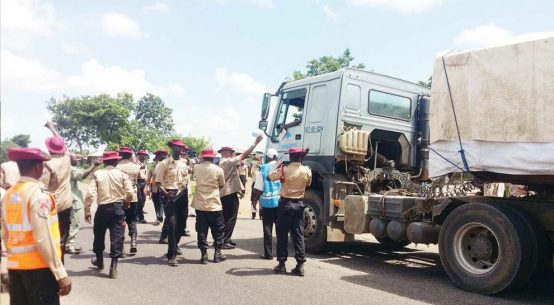
the zipline story….
In October 2016, Zipline began using drones to deliver medical supplies to health clinics in Rwanda. The San Francisco based company is a combination high tech startup, drone manufacturer, logistics service provider, and public healthcare system, consultant.
I talked to Zipline’s co-founder and COO, Will Hetzler, about the genesis of the company and the fact that they have had to be more than just a drone delivery provider to succeed in their mission. To succeed, Zipline has needed to partner with Ministries of Health. To support this work, Zipline engaged LLamasoft to analyze the medical supply chains in both Rwanda and in Tanzania. LLamasoft’s Global Impact Team does project-based supply chain consulting for Zipline at highly discounted rates based on the humanitarian nature of this mission.
To support this work, Zipline engaged LLamasoft to analyze the medical supply chains in both Rwanda and in Tanzania. LLamasoft’s Global Impact Team does project-based supply chain consulting for Zipline at highly discounted rates based on the humanitarian nature of this mission.

Zipline’s potential customers needed to understand how the drones were being developed to serve their needs. “From the beginning of the company, our CEO and I spent months traveling around as many (developing) regions as we could. Our CEO went to Latin America and Asia. I went to Africa. We started at the lowest level of the supply chain” meeting medical personnel in rural health centers. These frontline medical practitioners talked about the products they needed that they had poor access to, the challenges they faced, and the reasons for those challenges. Then Zipline went to the next level up in the supply chain, the regional warehouses, and had the same conversations. Then they went to the central warehouse and once again had the same set of conversations. The result was that they were not only able to design a better
These frontline medical practitioners talked about the products they needed that they had poor access to, the challenges they faced, and the reasons for those challenges. Then Zipline went to the next level up in the supply chain, the regional warehouses, and had the same conversations. Then they went to the central warehouse and once again had the same set of conversations. The result was that they were not only able to design a better
We started at the lowest level of the supply chain” meeting medical personnel in rural health centers. These frontline medical practitioners talked about the products they needed that they had poor access to, the challenges they faced, and the reasons for those challenges.
Then Zipline went to the next level up in the supply chain, the regional warehouses, and had the same conversations. Then they went to the central warehouse and once again had the same set of conversations. The result was that they were not only able to design a better
Then they went to the central warehouse and once again had the same set of conversations. The result was that they were not only able to design a better service but by the time they were ready to launch in Rwanda in 2016, they had a built-in constituency in place. They are now expanding their services to Tanzania.
“At the point where we enter,” Mr. Hetzler said, “the healthcare system has a budget and our job is to help them maximize the impact of their supply chain spend.” LLamasoft’s network design tools were important in helping Zipline play a consultative role.
The consulting is focused on determining how goods should flow to patients, where they should be stored, and how much should be stored at each node in the supply chain. For example, in Tanzania, Zipline plans to fly out of four medical warehouses, the first of which will be in Dodoma, the country’s capital. LLamasoft is currently working with Zipline to help design the product flow paths out of the Dodoma warehouse.
These are mathematically based decisions focused on achieving the desired service level while considering the variability of demand, inventory carrying costs, transportation costs, and the constraints that exist at various facilities. Not surprisingly, the constraints include understanding the range of the drones, how fast they travel, and the weight and dimensions of the goods the drone can carry.

But the constraints also include how much capacity a warehouse has and whether a patient care facility has cold storage or other specialized equipment needed for certain drugs.
No model can accurately capture all the details of how things operate on the ground. It’s not all about the math. “The qualitative review is critical,” Mr. Hetzler insisted.
One example involves ensuring the inputs to the model are accurate. One input to the network design model is the demand forecast. “Antimalarials are a cheap widely available medication. They were thought to be relatively easy to forecast because the factors that contribute to malaria prevalence are well understood. However, it turns out the devil is in the details.” If a clinic runs out of the adult dosage form, the doctors prescribe the less potent pediatric tablet and ask the patient to take multiple pills. “From the supply chain perspective, this is a confusing demand signal.”
Treatment compliance is an important consideration. If you just stock a pediatric dosage and expect adults to take multiple tablets, it’s harder for an adult patient to remember how much to take. It might be easier for the supply chain, but it’s not worth a risk to health outcomes. You need to stock the right dosages.” Without close collaboration with professionals on the ground, the network model cannot understand these kinds of data integrity issues.
So how has the network modeling affected the supply chain strategy? Before drones, all deliveries were ground-based. Ground-based deliveries are still used exclusively from the central warehouse to the regional warehouses. But from the regional warehouses to the clinics, certain medical supplies are now delivered by drone. Emergency situations often require drone deliveries.
“People intuitively understand, that if a mother is giving birth and needs a transfusion of a rare blood type, then drones are an obvious solution,” Mr. Hetzler explained. “Other cases are similar. Emergency vaccines, for example. Rabies is a condition that is outbreak driven.” There tend to be localized spikes leading to high demand for the vaccine. “Before a rabid dog is captured, it typically bites multiple people and infects other animals. All these people need treatment urgently. You need to be vaccinated within 24 hours of potential rabies exposure. If a patient isn’t vaccinated in time and develops rabies, they are going to die. There is nothing that modern medicine can do for them.”
Mr. Hetzlerthegave a second example. The country might have an eradication campaign for a parasite. In this instance, there is a special emphasis on products that treat that condition. Whereas, the medical authorities might normally be happy with a certain service level for that drug, because of the campaign in this region they may want a much higher service level.
FOLLOW US ON FACEBOOK FOR MORE LOGISTICS NEWS
Expensive medical supplies, products that have a short shelf life, and supplies with a hard to forecast demand pattern are products that are all good candidates for drone deliveries. If a clinic does not have specialized storage equipment for a certain drug, it also will be delivered by drone.
But there are also a group of products where ground-based transportation is the primary delivery mode, but drones make sense as the backup mode of delivery. The modeling showed that many products should not be stocked in such high volumes at the clinics, more safety stock should be in the regional warehouses. But if a health facility stocks out of a product, drones could be used for resupply until the next regularly scheduled delivery.
Supply chain practitioners will recognize this design as being what is called an “agile, pull-based supply chain.” In these supply chains, higher transportation costs are incurred, but the savings in lower inventory carrying costs and less spoilage more than makeup for higher cost deliveries. But this kind of network is not intuitive and can be hard to convey. Again, many supply chain managers are aware of the desire for local nodes in a supply chain to hold “just in case” inventory.
In summary, the Zipline story is about more than developing and deploying drones, it is a story about success depending upon effective, credible collaboration on where drones make sense and why.








